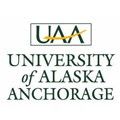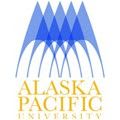Best Alaska Colleges & Universities

Alaska may appear to have limited higher education opportunities due to its remote location and low population, yet a closer look shows otherwise. Students who live close to major cities can attend Alaska Pacific University or one of the three University of Alaska campuses, while smaller towns are home to several technical schools and Christian colleges. In addition, four-year colleges in Alaska offer more than 100 online programs between them, making higher education accessible to anyone with a reliable internet connection. Start your Alaska college search, see which schools are the most affordable, and find invaluable college planning resources in the following guide.
Alaska College Leaderboard: Rankings
No matter what students want to study when they go to college in Alaska, they should be confident that they're receiving the best education their tuition can buy. In order to help students see what schools have to offer, we've ranked the top colleges in Alaska based on criteria such as price, financial aid opportunities, and the ratio of students to professors. Find out how schools ranked below." badge_two_year:"https://res.cloudinary.com/highereducation/image/upload/c_fill,f_auto,fl_lossy,q_auto/v1/LearnHowToBecome.org/college-states/badges/two-year/badge_alaska.jpg" badge_four_year:"https://res.cloudinary.com/highereducation/image/upload/c_fill,f_auto,fl_lossy,q_auto/v1/LearnHowToBecome.org/college-states/badges/four-year/badge_alaska.jpg" state:"Alaska" active:"4" %}
Integrated Postsecondary Education Data System (IPEDS): National Center for Education Statistics Latest 'Final Release' data available as of Fall 2016
College Scorecard: U.S. Department of Education
Rankings Methodology
Ranking Metrics
Data Sources
2-Year Programs
Ilisagvik College
4-Year Programs
Alaska Pacific University
University of Alaska Fairbanks
University of Alaska Anchorage
University of Alaska Southeast
Search and Compare Colleges in Alaska
All students have their own individual needs and career goals. As a result, it's imperative for them to find the school that will best position them to be successful in their chosen professions. Students who are looking for colleges in Alaska can use the search tool below to find the school that is best for them. Compare schools based on price, size, and location to help make this important decision.
College Planning & Assistance Programs in Alaska
The earlier students can begin preparing for college, the better. To that end, the Alaska Commission of Postsecondary Education has created several planning programs designed to help high school and other prospective students explore prepare for admissions test, explore career goals and apply for financial aid. Listed below are a few of the major programs:
Alaska College and Career Advising CorpsEstablished in 2009, the Alaska College and Career Advising Corps is designed to encourage more high school students to attend college and pursue high-skill careers. The initiative - part of the national College Advising Corps movement - employs recent college grads who visit high schools to connect with local students. These mentors help students map out career plans, register for admissions tests like the ACT and SAT, research college options, and apply for financial aid. With less than 50 percent of Alaska high school graduates pursuing higher education, this program hopes to make significant inroads on the state's college enrollment rate.
College Goal AlaskaHeld across 25 communities, College Goal Alaska is a series of events where students and their families can get help filling out FAFSA® paperwork - free of charge. Both volunteers and financial aid professionals are on hand to provide assistance. Dependent students should come with a parent or legal guardian while all students should bring appropriate tax forms and identification. Check here to get more information, check the upcoming schedule, and register for an event.
Money $martsThis free online resource arms Alaskan college students and recent graduates with core money-management skills. From setting a monthly budget and understanding credit scores to examining the financial benefits of graduating and paying off student loans in a timely matter, this site provides an invaluable resource for keeping student debt to a minimum.
Evaluating the Cost of College in Alaska
The cost of attending college in Alaska depends on what type of school students enroll in and whether or not they receive financial aid. This section compares tuition rates in Alaska to national averages, as well as the amount of financial aid students in the state generally receive.
Source: CollegeBoard
Source: IPEDS
Source: IPEDS
* Institutional aid represents grant and scholarship funds directly awarded by a postsecondary institution.
* Financial aid data represents 4-year public and private nonprofit schools only.
Most Affordable Colleges in Alaska
Cost is a key factor in the college decision-making process – yet tuition rates don't tell the entire story. Below we've listed the six-most affordable colleges in Alaska based on net price, which accounts for financial aid received and more accurately represents the cost of attending college.
- 1.
 University of Alaska Anchorage
University of Alaska Anchorage
$8,160 - 2.
 University of Alaska Fairbanks
University of Alaska Fairbanks
$9,372 - 3.
 University of Alaska Southeast
University of Alaska Southeast
$9,462
- 4.
 Alaska Bible College
Alaska Bible College
$9,592 - 5.
 Alaska Pacific University
Alaska Pacific University
$30,891
Alaska College Net Price vs. National Average
Average
Annual Net Price
Source: College Scorecard
Note: Rankings/data represent 4-year public and private nonprofit schools only.
Alaska Colleges With Top Alumni Earnings
College is a huge investment, so students need to know that they're getting an education that can yield a good return on their investment. The list below provides information on which colleges in Alaska have alumni that make the best salaries within ten years of entering college.
- 1.
 Alaska Pacific University
Alaska Pacific University
$47,400 - 2.
 University of Alaska Anchorage
University of Alaska Anchorage
$42,000
- 3.
 University of Alaska Southeast
University of Alaska Southeast
$39,500 - 4.
 University of Alaska Fairbanks
University of Alaska Fairbanks
$38,200
Alaska Alumni Salaries vs. National Average
Annual Median Earnings
10 Years After Entering College
Source: College Scorecard
Note: Rankings/data represent 4-year public and private nonprofit schools only.
Best Alaska Colleges for Low Student Loan Debt
In 2014, the Alaska State Legislature passed a measure that would create more favorable terms for those who get student loans. Even with this type of assistance, students are still concerned about keeping their student loan obligations to a minimum-which is highly influenced by what school they choose to attend. This section outlines which colleges in Alaska have students with the least amount of student loan debt after graduation.
- 1.
 University of Alaska Southeast
University of Alaska Southeast
$19,437 - 2.
 University of Alaska Fairbanks
University of Alaska Fairbanks
$20,000
- 3.
 University of Alaska Anchorage
University of Alaska Anchorage
$20,675 - 4.
 Alaska Pacific University
Alaska Pacific University
$25,125
Alaska College Grad Debt Vs. National Average
Median Federal Student
Loan Debt After Graduation
Source: College Scorecard
Note: Rankings/data represent 4-year public and private nonprofit schools only.
Cost of Living in Alaska: Housing, Healthcare and Other Expenses
Tuition is not the only expense students who attend college in Alaska must consider. Investopedia reports that although the rent in large Alaskan cities is lower than many other major cities in the country, residents do pay more for utility bills and groceries. This section provides a more detailed look at the cost of living in Alaska by comparing rates of expenses such as housing, groceries, transportation, and health care to the national averages.
| area | composite index | housing | groceries | utilities | transportation | health care | misc. |
|---|---|---|---|---|---|---|---|
| Statewide Average | 133% | 145% | 127% | 154% | 132% | 144% | 118% |
| Anchorage | 132% | 161% | 124% | 103% | 118% | 140% | 123% |
| Anchorage-Fairbanks-Juneau | 132% | 143% | 124% | 156% | 128% | 146% | 118% |
| Fairbanks | 134% | 120% | 120% | 231% | 130% | 148% | 121% |
| Juneau | 131% | 149% | 127% | 133% | 136% | 150% | 111% |
| Kodiak | 136% | 150% | 142% | 145% | 148% | 137% | 115% |
Source: The Council for Community and Economic Research
Accreditation for Alaska Colleges
When making a decision about which college to attend, it's important for students to look for schools that are accredited, which helps to ensure that they'll receive a quality education. Accreditation is provided by agencies that certify a school's curriculum, faculty, and facilities meet high standards. Colleges in Alaska are accredited by the Northwest Commission on Colleges and Universities, which provides credentials to both traditional and online schools. In addition, there are accrediting bodies that oversee specific degree programs. The following are examples of these agencies and the programs they accredit:
- The Council for the Accreditation of Educator Preparation accredits teaching programs at Alaska Pacific University, the University of Alaska Anchorage, the University of Alaska Southeast, and the University of Alaska Fairbanks
- The Academy of Nutrition and Dietetics accredits the dietetics program at the University of Alaska Anchorage
- The American Psychological Association provides accreditation for psychology degrees at the University of Alaska Fairbanks and the University of Alaska Anchorage
- The National Association of Schools of Art and Design accredits the visual arts program at the University of Alaska Anchorage
- The Commission on Accreditation in Physical Therapy Education accredits the physical therapist assistant program at the University of Alaska Anchorage
Popular Cities to Attend College in Alaska
Anchorage
Anchorage is one of Alaska's largest cities, and it is also considered one of the most livable cities in the country. Students who graduate from colleges in Anchorage often find employment in some of the city's most popular industries, which include the education, health services, and hospitality sectors. Among the colleges in the city are the University of Alaska and Alaska Pacific University.
| College Name | School Type | Annual Net Price | Annual Median Earnings 10 Years After College Only includes former students who received federal financial aid. |
|---|---|---|---|
 University of Alaska, Anchorage University of Alaska, Anchorage |
Public | $8,160 | $42,000 |
| The University of Alaska, Anchorage's most popular degree programs among the school's 18,154 students include business, health professions, psychology and sociology. Although the school, which was founded in 1954, is the largest university in Alaska, students enjoy a small 11:1 student to professor ratio. | |||
 Alaska Pacific University Alaska Pacific University |
Public | $9,372 | $38,200 |
| Alaska Pacific University, which opened in 1957, is located on a 175-acre campus near the trail system in Anchorage. The school has 732 students enrolled in the school's undergraduate and graduate programs. Some of the most popular degrees granted by the school are in business administration, liberal arts, and parks, recreation, and leisure studies. | |||
Fairbanks
Fairbanks, which has a population of 32,469, offers two- and four-year college programs at the University of Alaska, Fairbanks. Some key industries in the city are manufacturing, construction, leisure and hospitality, and health services.
| College Name | School Type | Annual Net Price | Annual Median Earnings 10 Years After College Only includes former students who received federal financial aid. |
|---|---|---|---|
 University of Alaska, Fairbanks University of Alaska, Fairbanks |
Public | $9,372 | $38,200 |
| The University of Alaska, Fairbanks has 9,870 graduate and undergraduate students enrolled at its nine colleges and schools, such as the School of Education, the School of Management, the School of Fisheries and Ocean Sciences, and the College of Natural Science and Mathematics. UAF offers 146 degree and 31 certificate options, with psychology, biology, and public administration among the most popular. With 2,784 faculty members, the school boasts small class sizes that allow students to get individualized attention. | |||
Source: College Scorecard
Alaska College Resources
There are many resources out there to help students choose which college in Alaska to attend. The following are some resources we have compiled to aid students with their research.
Adult Basic Education - Alaska Job Center NetworkThis agency is responsible for providing adult education to prepare students for vocational training.
Adult Learning Programs of Alaska...Where Learning Never EndsThis organization provides educational services to students in Fairbanks.
Alaska Commission on Postsecondary EducationThe Alaska Commission on Postsecondary Education promotes postsecondary education in the state by providing information about schools, financial aid, and resources.
Alaska Department of Education and Early DevelopmentThis agency oversees education in the state.
Alaska Resource EducationThis non-profit organization supports education on Alaska's natural resources.
American Association of Community Colleges - AlaskaThis website includes statistics about Alaska's community colleges, including the demographics of students.
Choosing a CollegeThis report includes information about different colleges around the state.
Education Services Office - State of AlaskaProvides educational benefits to members of the military.
DEED eLearning - Education & Early DevelopmentThis site provides online education through the Alaska Department of Education & Early Development.
University of Alaska SystemIncludes information about schools, scholarships, and student services for the University of Alaska System.
LearnHowToBecome.com is an advertising-supported site. Featured or trusted partner programs and all school search, finder, or match results are for schools that compensate us. This compensation does not influence our school rankings, resource guides, or other editorially-independent information published on this site.
View the most relevant programs for your interests and compare them by tuition, acceptance rate, and other factors important to you.